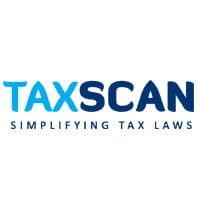CVD at 10% Levied on Insoluble Sulphar Despite ‘Nil’ Excise Duty: CESTAT sets aside Order [Read Order]
The assessing authority, without providing justification, had imposed a 10% CVD on goods that were subject to a ‘Nil’ rate
![CVD at 10% Levied on Insoluble Sulphar Despite ‘Nil’ Excise Duty: CESTAT sets aside Order [Read Order] CVD at 10% Levied on Insoluble Sulphar Despite ‘Nil’ Excise Duty: CESTAT sets aside Order [Read Order]](https://www.taxscan.in/wp-content/uploads/2024/09/site-imd-7.jpg)
The Bangalore bench of the Customs Excise and Service Tax Appellate Tribunal (CESTAT) has overturned the assessing authority's order imposing a 10% Countervailing Duty (CVD) on insoluble sulfur, noting that the goods is already subject to a 'nil' excise duty and that no additional duties are applicable, rendering the appeal sustainable on its merits.
The primary issue in the impugned order revolves around the sustainability of the additional duty charged by the Respondent during the import of goods, particularly given that there was no applicable excise duty at the relevant time. The Appellant imported ‘Insoluble Sulphur’ under bill of entry No. 6108813 on February 27, 2012. At that time, the excise duty for the goods classified under Customs Tariff Item 25030090 was recorded as ‘Nil’ according to Chapter 25 of the Central Excise Tariff Act, 1985. Despite this, the assessing authority imposed a 10% CVD at the time of the goods' clearance.
Learn to Trade Globally: Register for the Programme Now
Following this assessment, the Appellant, Midas Treads (India) Pvt. Ltd. filed an appeal before the Commissioner (Appeals), which was subsequently dismissed. The dismissal was based on several grounds: the assessment was based on the value and classification declared by the Appellant, which was accepted, and the duty was paid voluntarily. Additionally, the Appellant had not expressed any dissent at the time of clearance, nor had they requested a speaking order under Section 17 of the Customs Act, 1962. The Commissioner concluded that the assessment reached finality and was not subject to appeal, leading to the rejection of the Appellant's appeal.
During the hearing, Mr. Abraham Joseph Marcos, representing the Appellant, argued that the rate of duty was ‘Nil’ for goods classified under the relevant chapter of the Central Excise Tariff, 1985. He contended that, under Section 17 of the Customs Act, once an assessment order is made, it reaches finality and is appealable. He further asserted that the impugned order rejecting the appeal was unsustainable as it was based on the assessment's finality.
Learn to Trade Globally: Register for the Programme Now
Further clarified that the Appellant was not disputing the value assessed by the adjudicating authority, arguing that the acceptance of the declared value should not justify an illegal assessment of any duty rate. He referenced Section 128 of the Customs Act, emphasizing that any decision made under this Act is appealable, citing the Tribunal's decision in the case of M/s Ruchi Soya Industries Vs. CC-2013, which affirmed that assessments on bills of entry are indeed appealable.
The bench consists of P.A. Augustian (Judicial member) and Pullela Nageswara Rao (Technical member) reviewed both parties' arguments and the case records. It acknowledged that the Appellant had accurately declared the classification and value of the goods during import, both of which were accepted by the Department. Under Section 3(1) of the Customs Tariff Act, any imported article is subject to an additional duty equivalent to the excise duty on similar domestic products. Given that the Central Excise Tariff Act, 1985 specified a ‘Nil’ rate for the relevant tariff item, no excise duty or additional duty should have been levied on the goods. The bench noted that the assessing authority, without providing justification, had imposed a 10% CVD on goods that were subject to a ‘Nil’ rate.
Learn to Trade Globally: Register for the Programme Now
Furthermore, the bench concluded that the Appellant had the right to appeal the assessment if they found it unacceptable. Thus, the Appellate authority should have considered the merits of the appeal rather than dismissing it due to the lack of value enhancement or classification change. In light of the facts and circumstances, the appeal is allowed, granting the Appellant consequential relief as per the law.
To Read the full text of the Order CLICK HERE
Support our journalism by subscribing to Taxscan premium. Follow us on Telegram for quick updates
M/s. Midas Treads (India) Pvt. Ltd vs Commissioner of Customs , 2024 TAXSCAN (CESTAT) 755 , Mr. Abraham Joseph Marcos , Mr. K. Vishwanatha

